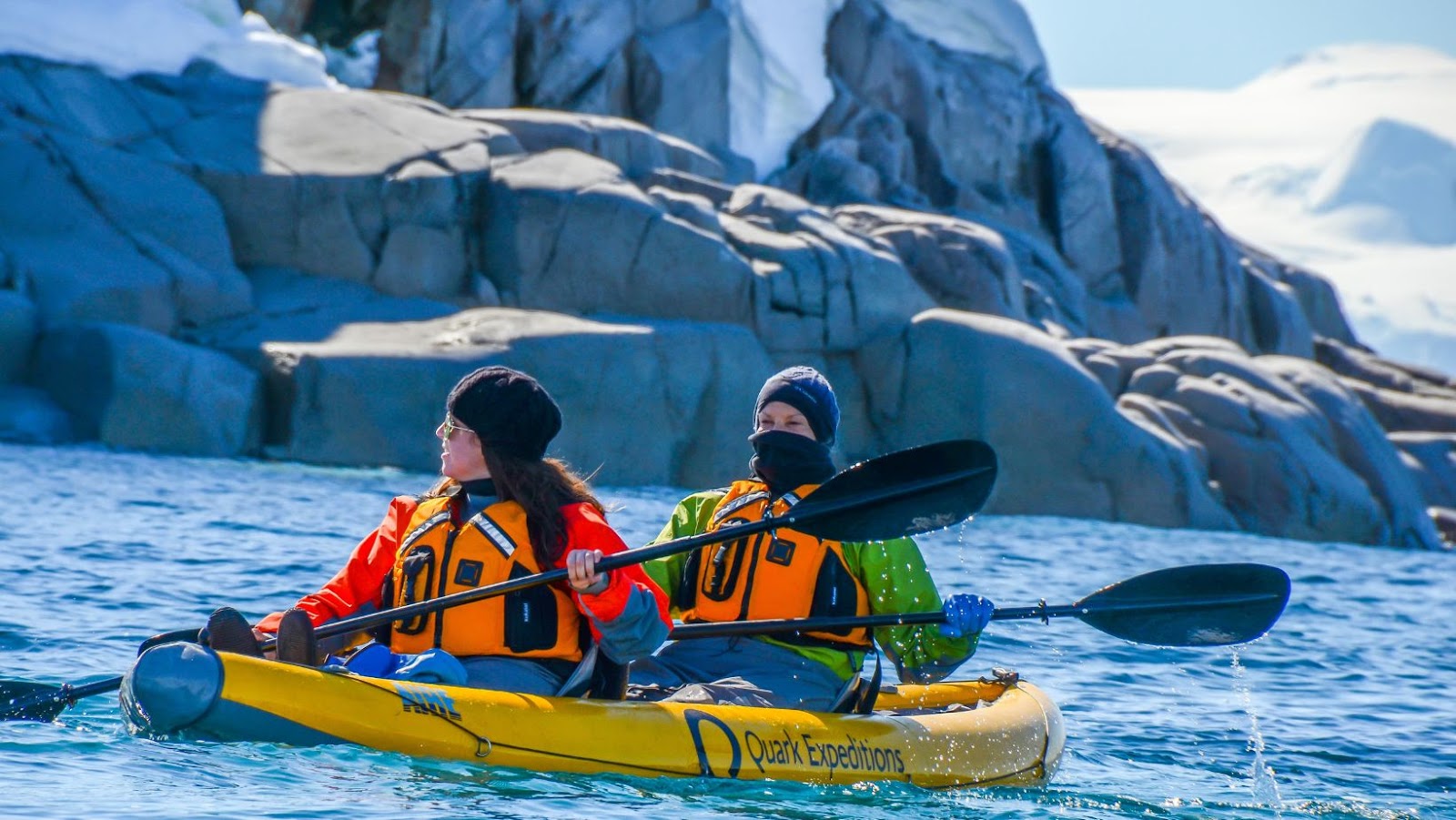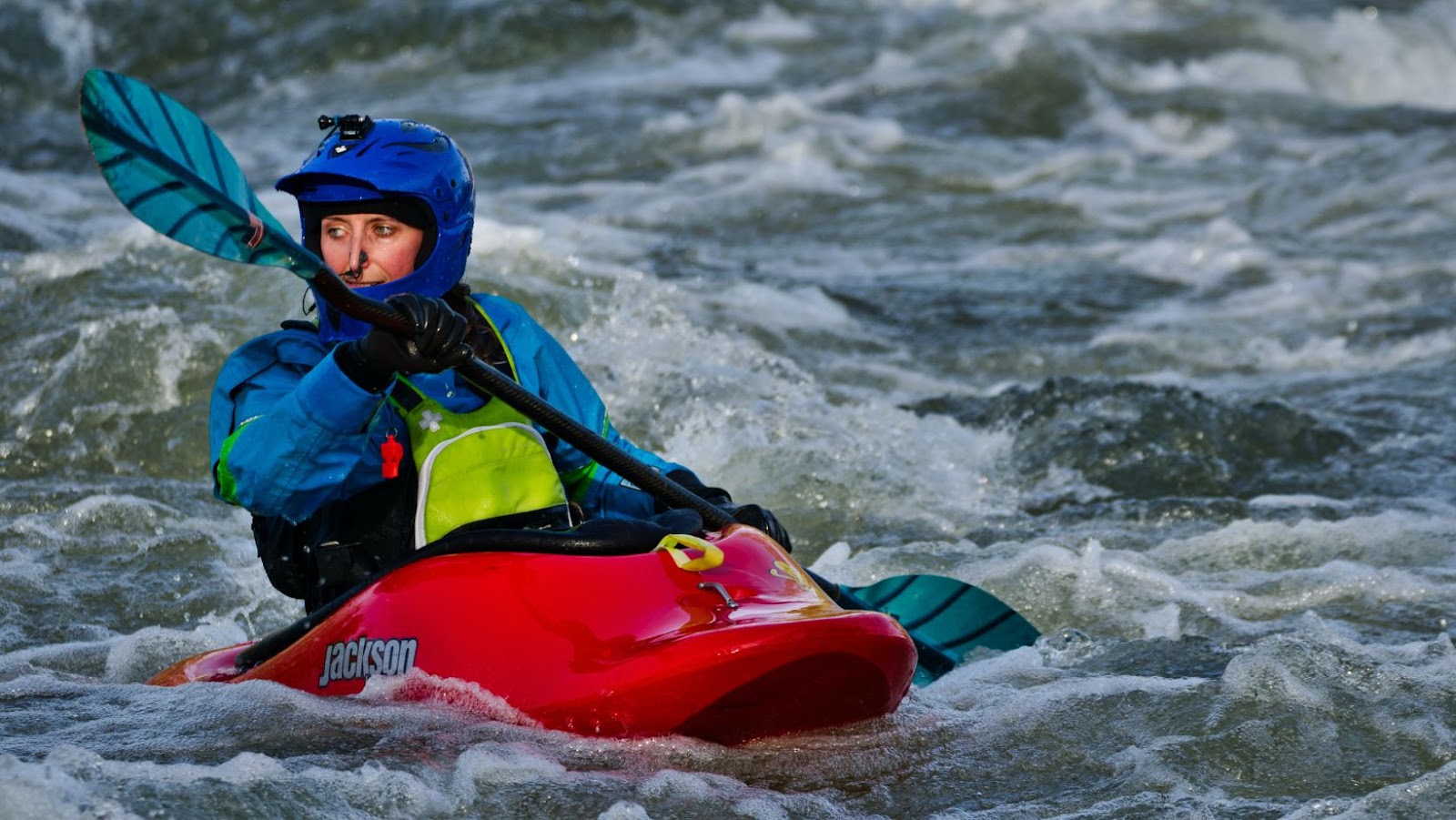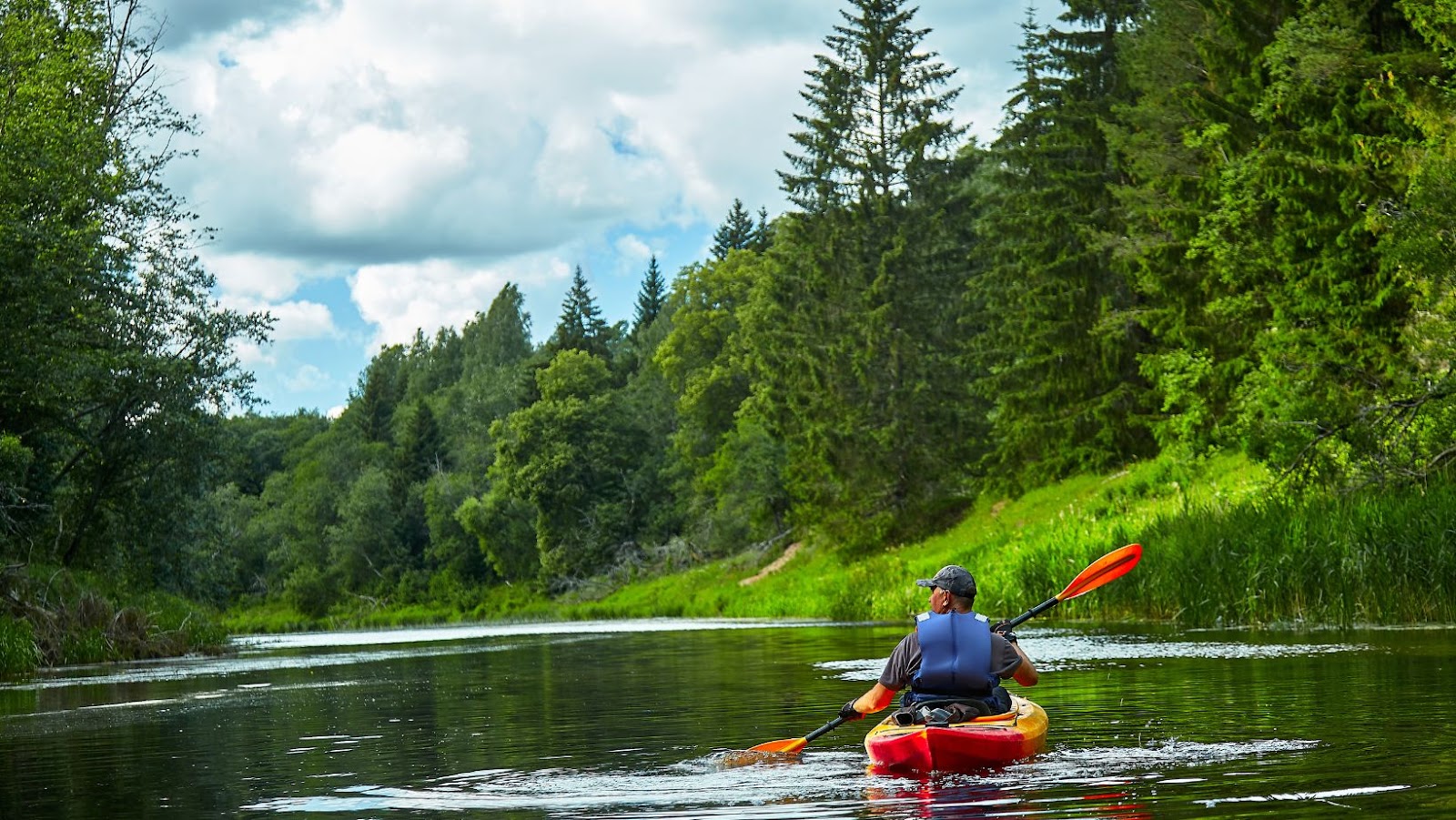Are you looking for the perfect outfit to wear while kayaking? Whether you’re a novice or an experienced kayaker, there are key elements to consider when selecting what to wear on the water. You’ll find all the information you need in this blog!
So, get ready and let’s go through what to wear for a successful day of kayaking.
What do you Wear Kayaking
Kayaking is an exciting and rewarding way to enjoy the outdoors and explore your local waterways. But before you embark on your kayaking adventure, it’s important to understand what type of clothing to wear and be properly prepared. The following guide will help you choose the right clothing for a comfortable, safe kayaking experience.
Temperatures on the water can be difficult to predict, so it’s essential to wear clothes that are both lightweight enough for comfort in the sun and warm enough for those cooler times. While it may seem counter-intuitive, cotton can be a dangerous choice for clothing: if you fall in the water and your clothing becomes saturated with water, cotton can become significantly heavier and make swimming more difficult. It’s best to choose items made from synthetic fibers as these will dry quickly if you fall in.
In addition to avoiding materials like cotton, there are several categories of clothing that are ideal for kayaking: moisture-wicking shirts, quick-drying shorts or pants (which should be slightly tight around the waist so they don’t come off during rough waters), fleece tops or jackets that provide warmth but are still breathable, nylon windbreakers (which can also protect you from insects) and neoprene wetsuits or drysuits (if necessary). It’s also recommended that men wear compression shorts under their garments while women should consider a swimsuit underneath their clothing as an additional layer of protection against exposed skin when wet. Other essential accessories include hats, sunglasses with polarized lenses (to reduce glare when paddling) and wetsuit booties or river sandals; UV protective fabrics can help protect your skin from damaging UV rays while out on the water. Finally remember: no matter what items you choose make sure they won’t impede movement which could lead to exhaustion over time.
What are Clothing Essentials
Kayaking can be a great way to enjoy nature, spend time with friends and family, and stay active outdoors. As you prepare for your kayaking trip, an important part of the equation is choosing the right clothing for comfort, safety and performance. Here are some essential items to consider when selecting clothes for kayaking.
Footwear: When choosing footwear for kayaking, it is important to look for shoes that are waterproof or water-resistant as they will keep you safe and comfortable on the water. Look for footwear that provides good grip, decent support, breathability and protection from any potential debris or rocks in the water. This could include wearing wetsuit booties or neoprene socks with your sneakers or sandals.

Upper Body Clothing: The type of clothing you will wear on top depends on the season and weather conditions but should be designed to provide insulation against cold water immersion in case of drowning as well as sun protection in hotter climates. Clothes made out of light fabrics such as nylon are usually a good option while avoiding overly baggy clothes which could increase drag while moving in the water. Ponchos made from Polytetrafluoroethylene (PTFE) or other waterproof shells might also be suitable depending on your environment and conditions so check what types of clothing materials can be used in this area before purchasing anything specific for kayaking needs. Long padded pants are also often recommended when kayaking; they typically come with adjustable straps at different points along the leg allowing them to fit snugly around your legs ensuring maximum maneuverability and high comfort levels when moving about in waterskipping areas.
Headwear: Depending on how much sun there is during your outing time period, headgear can provide an effective barrier against any potential sunburns especially when coupled with using SPF protection lotions/sunscreens where appropriate. In cooler climates however insulating caps such as those made from wool can help keep head temperatures down while improving overall warmth levels without interfering with vision during tough maneuvers over waterskipping areas like lakes or riverskins etc.; these become particularly essential when chances of dipping below ice temperatures start increasing which often calls for extra layers over regular headgear.
Types of Kayaking
Any time spent out on the water can include a range of activities, and kayaking is no exception. Whether you’re heading upstream on a river or lake or tackling the rougher waters of the ocean, your safety relies heavily on the correct choice of clothing. This means that for any adventure kayaking trip, there are a few essential items to consider wearing.
Types of Kayaking
The type of kayaking you plan to do will determine what paddling gear is necessary — from white water to recreational paddling, open water sea kayaking or touring, it’s important to dress appropriately for the activity. Kayakers spending time on larger bodies of water should opt for bright colors and reflective materials to aid in visibility. Depending on your level and type of paddling, it’s best to have access to a dry top and paddle jacket as well as warm layers underneath. A helmet and life vest should also be worn at all times while out on the water.
Kayak Clothing
Layering is key when planning any outdoor activity — choose clothes that will keep you comfortable in both hot and cold climates, such as a light shorts-shirt combination with jackets and hats if needed. In cooler temperatures, ensure that you wear waterproof coatings over lightweight breathable fabrics such as wool or synthetic material like Polypropylene which is designed specifically for outdoor sports people. Kayakers should add neoprene booties or shoes for improved warmth in chilly waters, with either elastic-toed shoes or open cut shoes ensuring ventilation but no more than that!
Footwear
When kayaking, it’s important to wear the right type of footwear. It’s best to choose a pair of shoes that are waterproof and provide support for your feet in the boat. Shoes with laces can provide more stability and give you the best grip inside the boat. Wearing water socks or water sandals may offer less stability and protection, but will still protect your feet from abrasions if you need to scramble around on rocks.
Avoid flip-flops, which can easily come off when you’re getting in or out of the kayak. No matter what type of footwear you decide to wear, be sure that it fits securely and provides enough traction in wet conditions.
Accessories
For kayaking adventures, selecting the right accessories can make the experience more comfortable and enjoyable. Some important items to consider are hats, life jackets, dry bags, baby carriers and other protective clothing.
Hats: Wearing a broad hat is one of the most important items you should have with you when kayaking. Hats help protect you from the sun, wind and rain while also helping keep your face cool in warm temperatures. When choosing a hat for kayaking, opt for one that is waterproof and breathable.
Life Jackets: Always wear a properly fitting life jacket or Personal Flotation Device (PFD) when paddling. Life jackets come in a variety of shapes, sizes and materials to best fit your body type and activity level. PFDs are typically designed for specific water conditions so it’s important to know where and how you will be paddling before selecting a PFD or life jacket.
Dry Bags: Dry bags are essential for storing items such as food, phones or other electronics that need to stay dry while out on the water. Waterproof bags come in various sizes and can be clipped onto your kayak using buckles or straps depending on their size capacity.
Baby Carriers: For parents wishing to take younger children along with them on kayaking trips, there are specialized baby carriers that allow parents to safely bring toddlers out on their water adventure. The baby carrier should fit comfortably on both parent’s backs without causing strain or discomfort while wearing it during extended trips on the water.
Protective Clothing: Depending on where you paddle it is important to have extra insulation layers or specific weather-related protective clothing such as waterproof rain gear or quick-dry shorts/shirts if the temperature varies significantly from day-to-day during your trip. These pieces of clothing can keep your body warm even when wet which is helpful for extended stays out in different weather conditions.
Safety Considerations
Safety should be the utmost priority when kayaking, as the activity is inherently risky and involves interacting with natural elements. Wearing the proper safety gear can help reduce the risks and make for a more enjoyable experience.
The first item to consider is a life jacket or personal floatation device (PFD). Many structures provide PFDs for each kayaker to use, but it may be worth investing in your own if you plan to make frequent visits. Look for a jacket that fits snugly while allowing you full range of motion — too tight or too loose can both lead to a loss of comfort and control.

Next, you’ll want to look into proper apparel. This will depend on the temperature of the water and air; dress appropriately in non-cotton layers if it’s cold outside. Consider wearing synthetic or wool materials that wick away moisture since they’ll keep your body warm even after they’ve gotten wet. Kayaking gloves may help protect your hands, and fins/footwear/drysuits better protect your lower extremities from cuts and abrasions due to contact with sharp objects or obstacles in the water (rocks, logs).
Finally, be sure to bring a hat or sun-protective clothing if you anticipate spending extended time outdoors — this will reduce your exposure to harmful UV rays from the sun!
Tips for Choosing the Right Gear
When preparing to go kayaking, it’s important to make sure you have the right gear. What you wear while paddling will have a big impact on your comfort, safety and performance. To get the most out of your time on the water, here are a few tips for choosing the right apparel:
Choose clothing based on water temperature: The temperature of the water will be a major factor in determining what type of clothing you need. Colder water temperatures require thicker, warmer materials like neoprene wetsuits or synthetic insulation jackets and pants. Warmer temperatures may only call for swimwear or quick drying shorts and shirts.
UV Protection:In tropical areas where there is intense sunlight, UV protection for clothing is an important consideration. Look for clothing that offers sun protection of at least 30 SPF (sun protection factor).
Vasque running shoes: It’s also important to consider footwear when kayaking. Choose something with good traction that provides ankle support but still allows flexibility to paddle comfortably. Good options include sneakers or Vasque trail runner shoes with sticky Ultra XTR soles (outsoles) that provide excellent grip on wet surfaces.
These are just a few general tips when selecting apparel for kayaking adventures. Consider consulting with local outfitters who can provide expert advice on products specifically designed and tested for paddlesports use as well as other related gear needed for a successful day out in your kayak!
In conclusion, it is important to take the necessary steps to ensure that you are safe and warm while kayaking. Always wear protective gear such as a life jacket or a drysuit or wetsuit if necessary. Invest in good quality appropriately-sized wet clothes that can keep you dry, warm and comfortable while out on the water.
Finally, make sure that any accessories you need are with you every time you head out. This could be anything from a hat or sunglasses to sunscreen and insect repellent. With the right clothing, equipment and safety measures in place, you can confidently enjoy your time kayaking so get out there and get paddling!



No Comment! Be the first one.